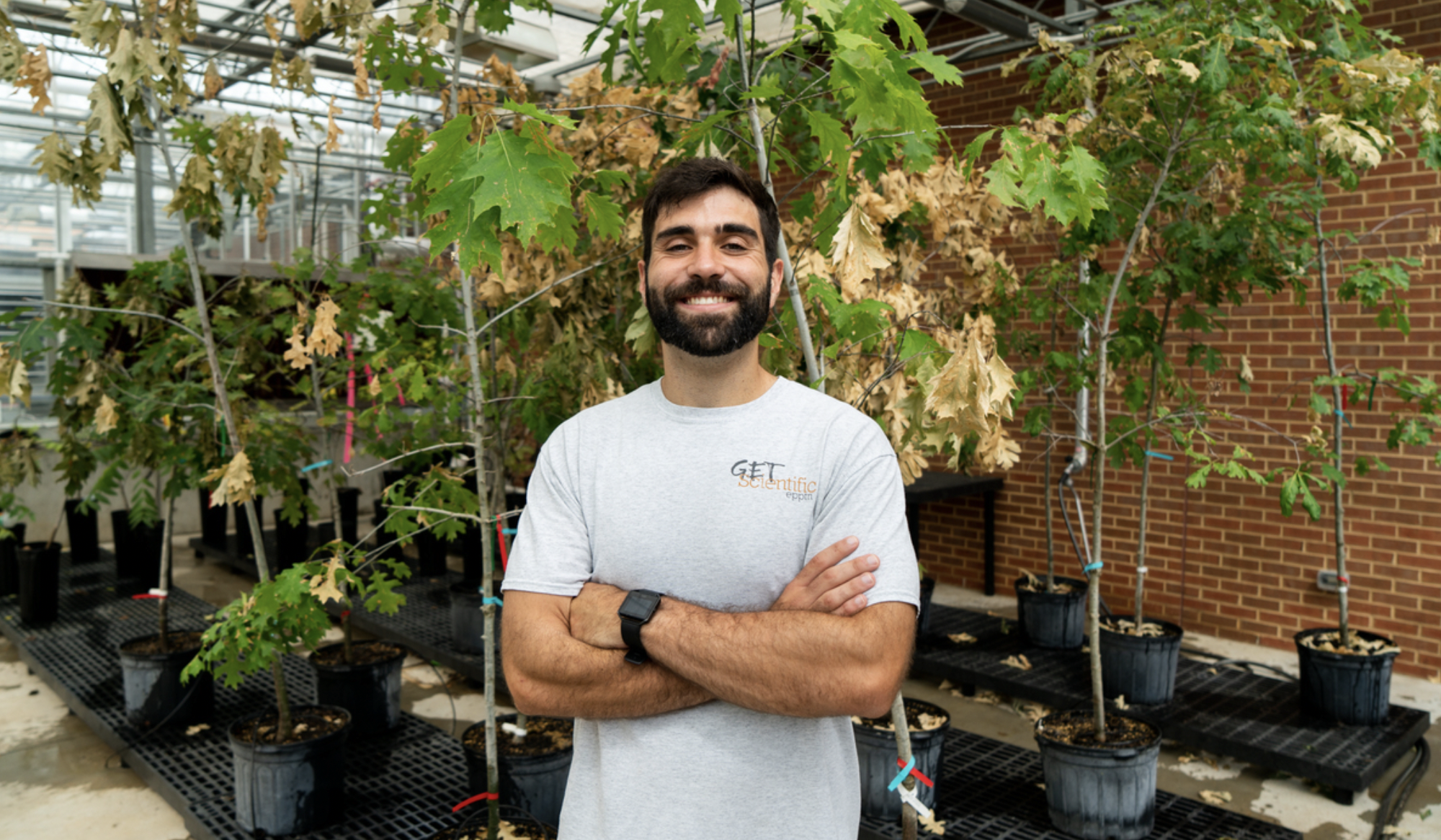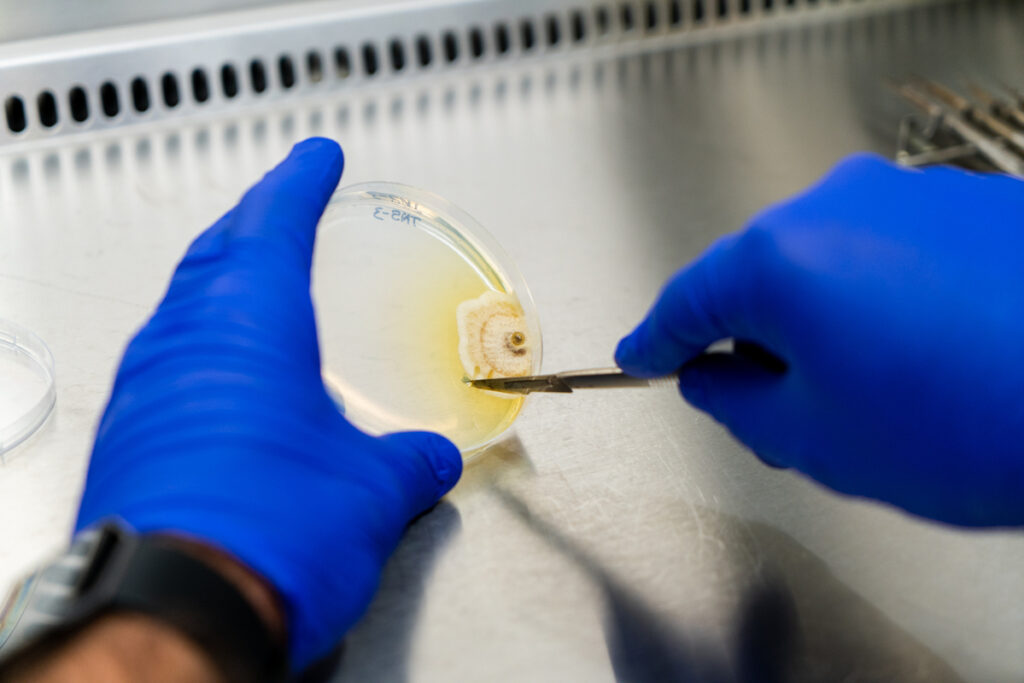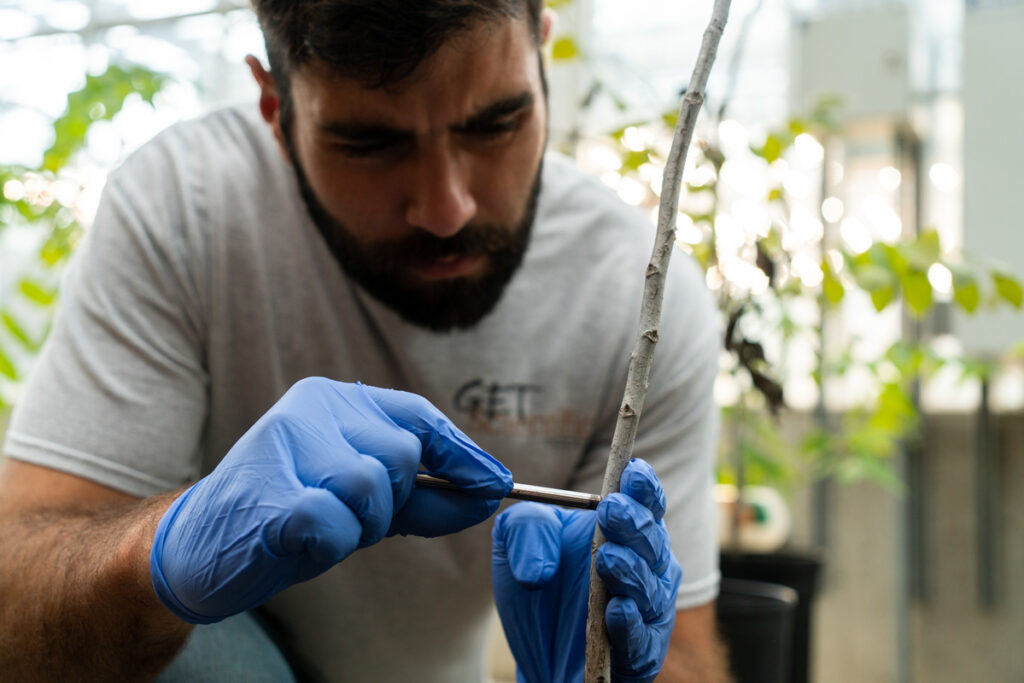
PhD candidate studies the diseases of trees to protect forests against the threat of deadly pathogens
Where are you from, and what led you to UTIA?
I grew up in Butler, Pennsylvania, a town about one hour north of Pittsburgh. Prior to attending UTIA, I received my Bachelor of Science in Biology at Slippery Rock University in Slippery Rock, Pennsylvania, and my Master of Science in Biological Sciences at Wright State University in Dayton, Ohio.
Can you tell us about your research and why it is important?

My research is centered around a disease called Thousand Cankers Disease (TCD), which affects walnut and wingnut trees. Walnut trees are distributed globally and include species such as the English walnut which is grown for its edible nuts and the eastern black walnut which is valued for its high-quality timber. Thousand Cankers Disease most severely affects eastern black walnut, which is native to portions of the eastern United States, including Tennessee, and has been introduced throughout the United States for use as a shade and timber tree.
Trees infected with TCD can be severely damaged, reducing timber quality and in some cases die two to three years following infection. The goal of my research is to develop a holistic understanding of how the fungal pathogen that causes TCD, Geosmithia morbida, interacts with eastern black walnut trees to cause disease. I do this by exploring potential mechanisms used by the pathogen to harm the tree and characterizing how infected trees respond to pathogen-associated damage. I also evaluate how Geosmithia morbida affects the microbial communities associated with eastern black walnut, such as bacteria and fungi, which can aid the plant in tolerance to stress and disease.
My research also aims to develop management strategies for Geosmithia morbida by exploring the ability of potential biological and chemical management tools to restrict the growth of Geosmithia morbida in infected plants. Lastly, I am also working to understand how environmental stressors, such as drought, may influence the outcome of Thousand Cankers Disease and if using management practices such as supplemental irrigation can reduce the severity of the disease.
Why plant pathology?
I have always been interested in applied sciences, microbiology and plant sciences. Plant pathology is a perfect way to combine all of my scientific interests and apply them to develop solutions to problems threatening the health of plants, which are important sources of food, fiber, fuel and medicine and are also crucial for the sustainability of natural ecosystems.
What does a typical day as a PhD student look like for you?
As a PhD student, my day to day varies greatly. Some days I may be working in the lab, extracting DNA or RNA from plant tissues or working in the greenhouse with trees. Other days, I am analyzing data or writing papers reporting the results of my research. One of the great things about being a PhD student is that very few days look the same.
What has been your proudest moment during your time at UTIA?
My proudest moments while at UTIA have always been getting to see the “lightbulb click” in the heads of the students I have mentored when they grasp a new concept and when these students go on to present their research to an audience for the first time.
How has your experience in the Herbert College of Agriculture prepared you to enter the field?

As a student in the Herbert College of Agriculture and the Entomology and Plant Pathology Department, I have been fortunate to participate in a wide range of professional development opportunities. This includes learning how to communicate about science through a variety of methods such as extension documents, grant proposals and peer-reviewed publications. I have also been fortunate to gain experience in teaching and mentoring students including high school, undergraduate and my fellow graduate students. Due to the collaborative nature of the college and department, I have also been able to participate in a diverse set of research activities that have helped me develop a broad set of technical and analytical skills. I feel that when I graduate from the Herbert College of Agriculture, I will be well prepared to pursue my career goals.
Do you have any advice for prospective students?
My advice to prospective students is to not be afraid to ask questions or ask for help. I know it can be intimidating at first, but everyone at UTIA is here to help each student learn and grow so that they can reach their goals. I would also encourage students to not be afraid of failure. A lot of scientific research does not go right the first time and by taking the time to understand why something didn’t work, you learn a lot more and become a better researcher and scientist.
What do you like to do outside of work and/or what is a fun fact about yourself that your fellow graduate students and professors may not know?
When I am not working, I really enjoy running and kayaking. I also like reading comic books and my favorite characters are the X-Men.
What are your plans for after graduation?
After graduating from UT, I will be joining Dr. Melissa Cregger’s research group in the Biosciences Division at Oak Ridge National Laboratory as a postdoctoral research scholar. There, I will be studying the effects of microbial invasions of plant health. My long-term career goal is to one day become a professor and serve as a mentor to the next generation of biologists.
*Aaron Onufrak successfully defended his dissertation and graduated from UT in December 2023.
